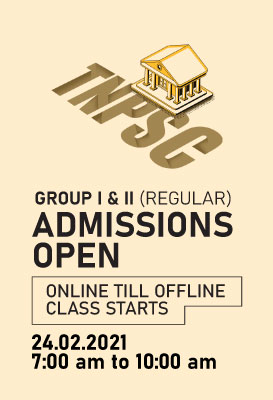PREVIOUS
SDG Goal wise programs of India – Part 10
December 3 , 2024
87 days
552
0
SDG Goal wise programs of India – Part 10
(இதன் தமிழ் வடிவத்திற்கு இங்கே சொடுக்கவும்)
SMART-PDS
Launched:
- 2015.
- The SMART-PDS (Scheme for Modernisation and Reforms through Technology in Public Distribution System) was launched by the Department of Food and Public Distribution (DFPD), under the Ministry of Consumer Affairs, Food & Public Distribution.
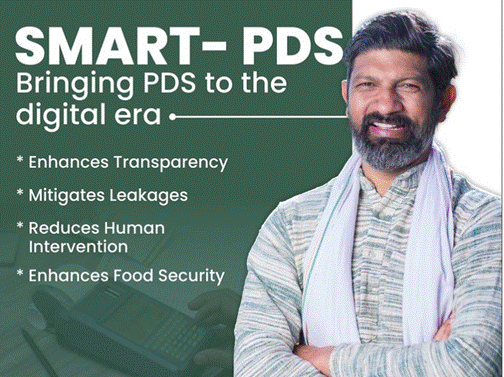
Ministry or Nodal Agency:
- Department of Food and Public Distribution (DFPD).
- Union Ministry of Agriculture and Farmers’ Welfare (MoAFW) (for family-based ONORC/ration card data mapping).
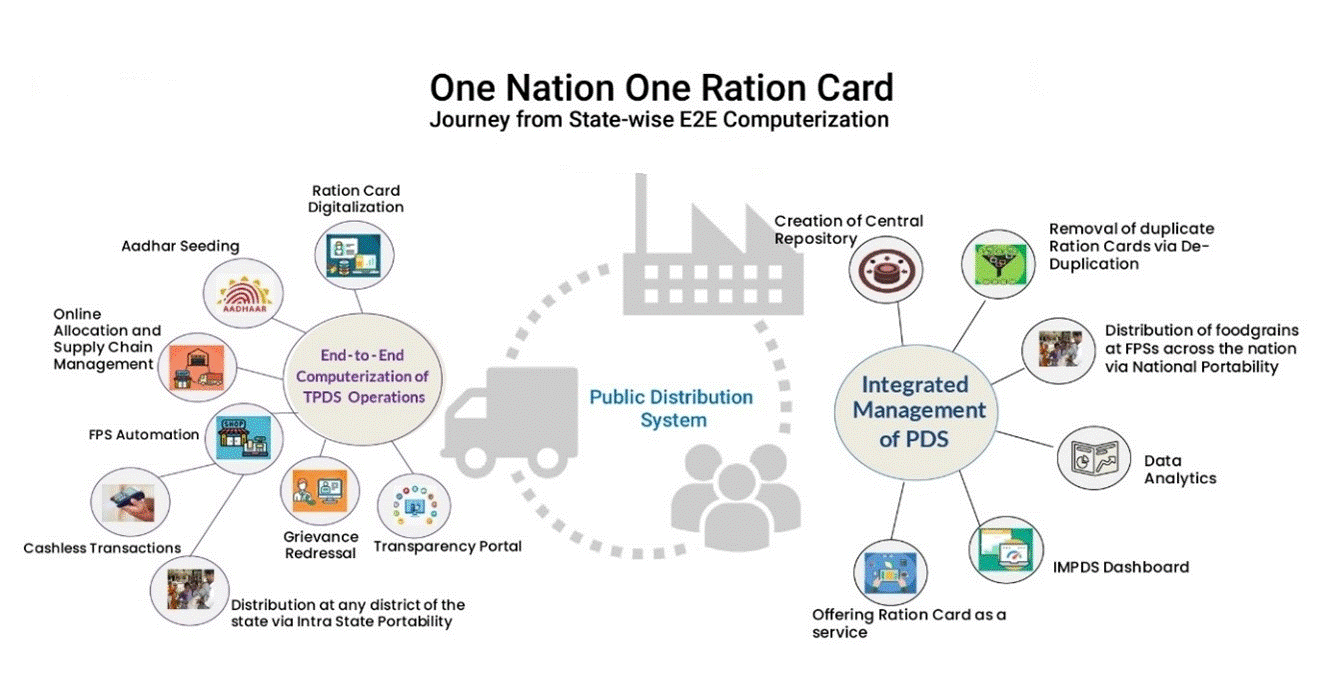
- Aadhaar (UIDAI).
- Ministry of Education, Women and Child Development (for integration).
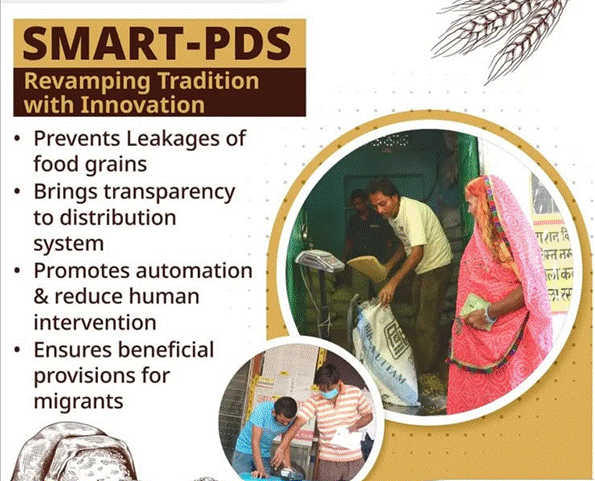
Objectives:
- Modernization of TPDS: To modernize the Targeted Public Distribution System (TPDS) through technology-driven reforms.
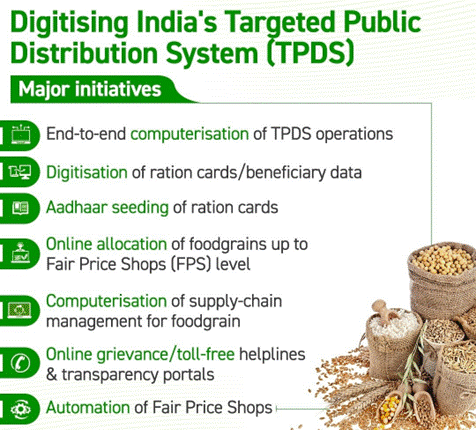
- Prevention of Food Grain Leakage: Reduce the leakage of food grains and improve the efficiency of the distribution chain.
- Ensure Ration Availability for Migrants: Address the food security needs of migrants and integrate beneficiary data.
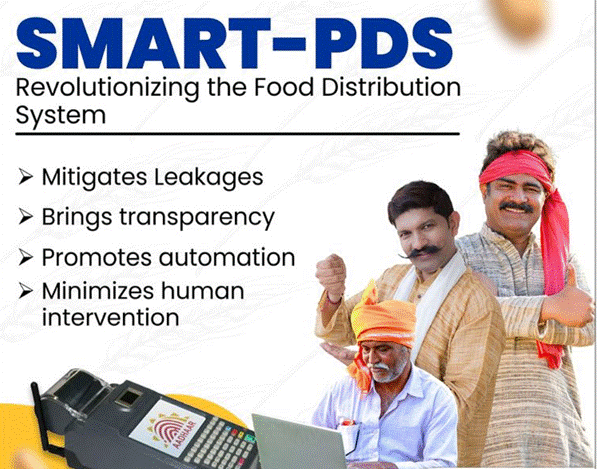
- Standardization and Integration: Standardize the PDS operation across all states and integrate it with key institutions such as FCI (Food Corporation of India), CWC (Central Warehousing Corporation), and UIDAI.
- Overcome Technological Limitations: Address state-level technological shortcomings in the PDS operations through technology-led reforms.
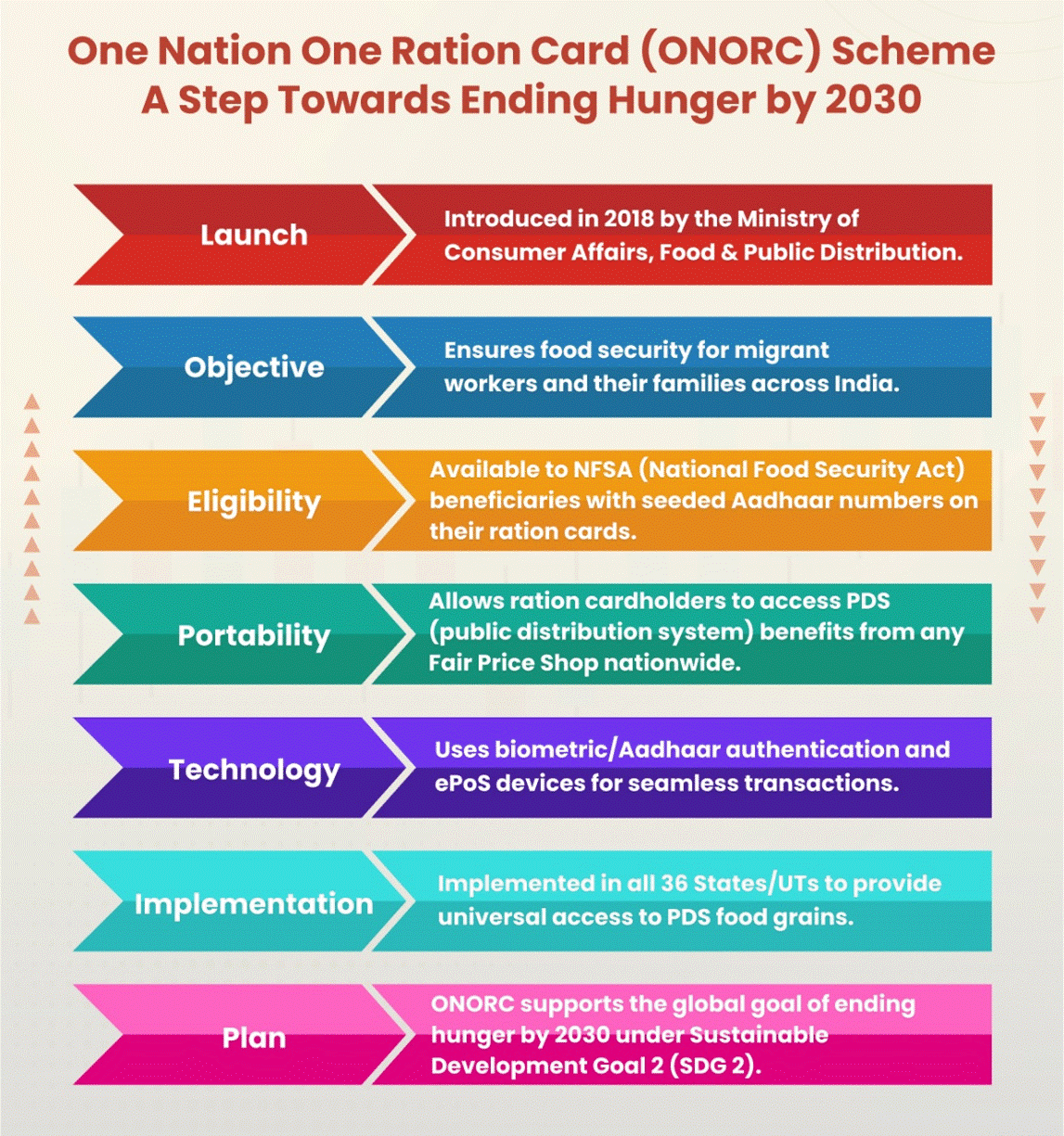
- One Nation One Ration Card (ONORC): Implementation of the ONORC for nation-wide portability and a national-level data repository for de-duplication of ration cards.
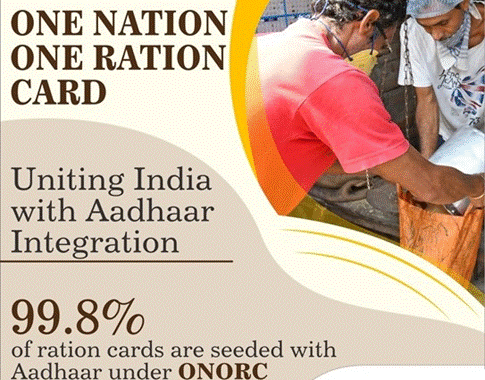
- Integrated Data Infrastructure: Create an integrated data system across ration card management, foodgrains allocation, supply chain.
Beneficiaries:
- Targeted Public Distribution System (TPDS) Beneficiaries: This includes approximately 81.35 crore individuals every month.
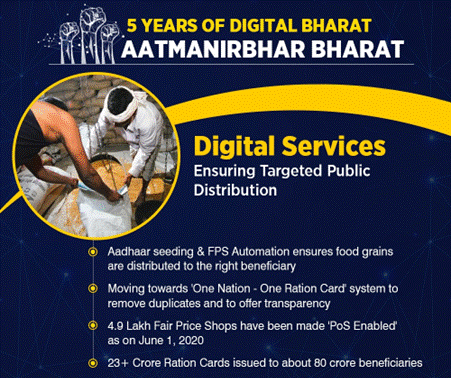
- Migrant Workers: Ensuring the availability of ration for migrants based on data analytics and mobility patterns.
- Beneficiaries of Other Central Schemes: Data from SMART-PDS is being leveraged for the e-Shram Portal, Ayushman Bharat, PM-SVANidhi, and others.
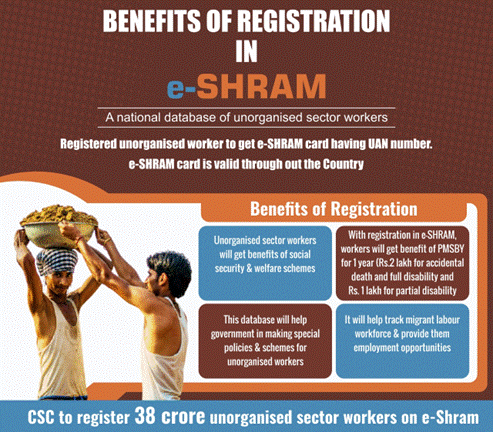
Eligibility Criteria:
- Eligibility for PDS: Indian citizens below the poverty line or those falling under specific social categories are eligible.
- Aadhaar Integration: Beneficiaries must have Aadhaar numbers linked to the ration card system for identification and verification.
- ONORC: To be eligible for the portability of ration cards under ONORC, beneficiaries must be part of the integrated system of ration card management.
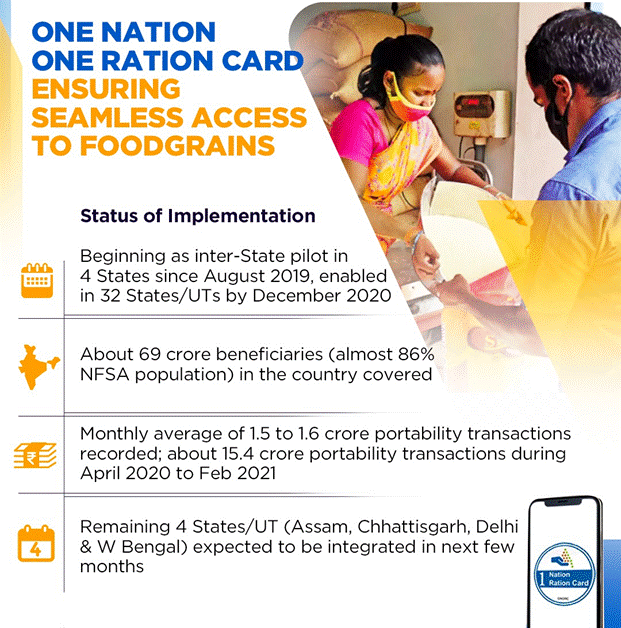
Benefits:
- Prevents Leakage: Aims to eliminate leakage and corruption in the distribution of food grains.
- Improved Efficiency: Enhances the efficiency of the ration distribution chain by using ePoS devices for Aadhaar-based authentication.
- Portability of Ration Cards: The One Nation One Ration Card system allows beneficiaries to access food grains from any fair price shop across the country, which is particularly beneficial for migrant workers.
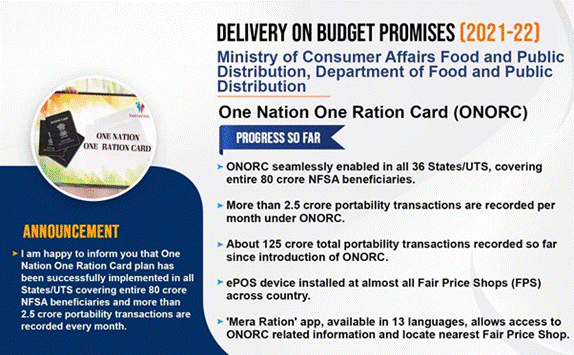
- Data Analytics for Welfare Schemes: The data generated can be used for other central welfare schemes like Ayushman Bharat, PM-SVANidhi, etc.
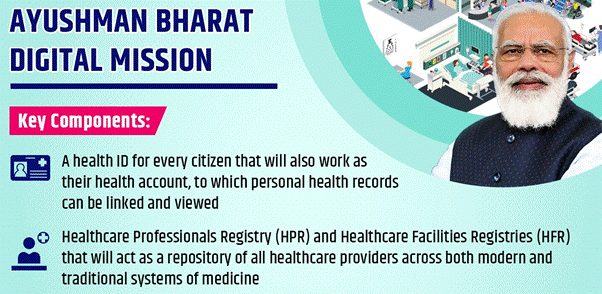
- Technology-driven Reforms: Helps overcome state-level limitations in PDS operations, creating a standardized, integrated central system.
- Nationwide Beneficiary Tracking: With Aadhaar integration, beneficiaries can be tracked from nutrition schemes like ICDS to PM Poshan and PDS, providing a seamless service for vulnerable groups.
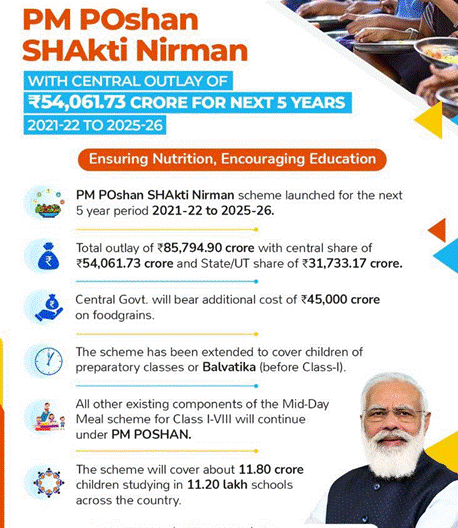
- Data Integration: The system provides a comprehensive data repository for government ministries to improve policy implementation.
Additional Information:
- SMART-PDS is beyond just ration distribution: The scope extends to ensuring food security, welfare scheme integration, and data-driven decision-making for efficient service delivery.
- AI and Data Analytics: The use of artificial intelligence and big data analytics will bring greater accountability and help in tracking migration and consumption patterns, making the system more responsive to people’s needs.
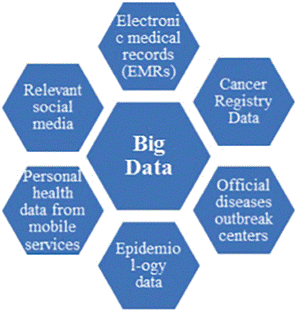
- ePoS and Digital Transformation: Nearly 93% of foodgrain distribution is done through Aadhaar authentication, utilizing electronic Point of Sale (ePoS) devices for verification and monitoring.
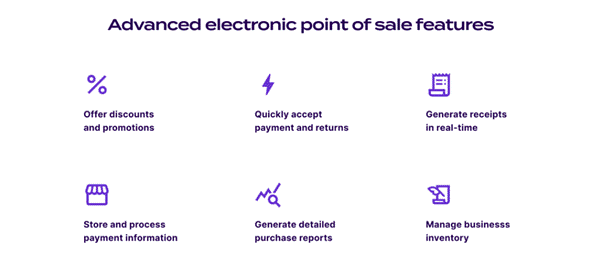
Goal 03: Good health and well-being
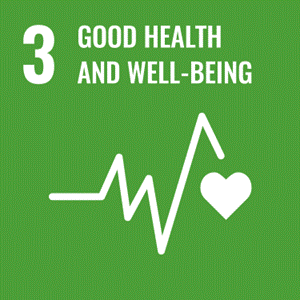
National Health Mission (NHM)
Launched:
- 2005.
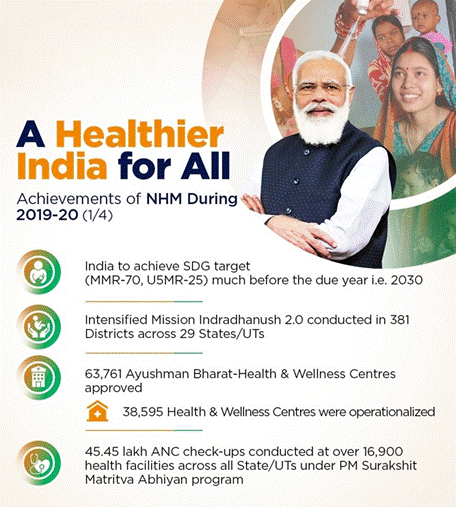
- Initiatives Included:
- National Rural Health Mission (NRHM)
- National Urban Health Mission (NUHM)
Ministry or Nodal Agency:
- Ministry of Health and Family Welfare (MoHFW).
Objectives:
- Universal Healthcare Access: Ensure equitable access to quality healthcare services for all, regardless of socio-economic or geographical barriers.
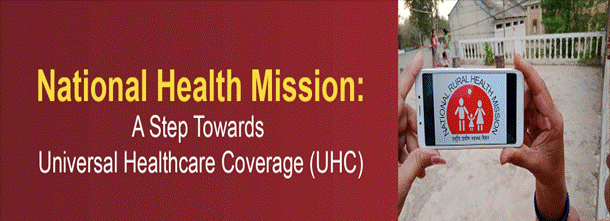
- Health Infrastructure Strengthening: Improve the quality of healthcare services at all levels, from primary health centers (PHCs) to district hospitals.
- Human Resource Development: Train and develop a skilled healthcare workforce, including medical professionals and community health workers.
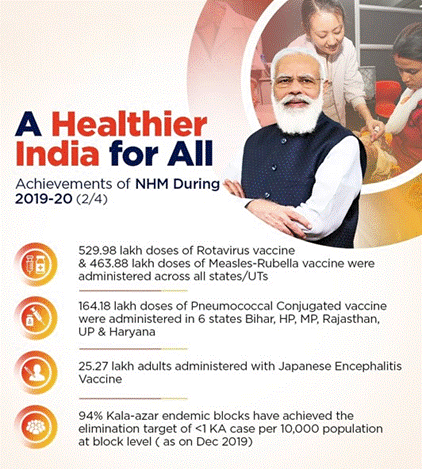
- Preventive Healthcare: Promote preventive healthcare, such as immunization, maternal and child health, and disease control programs, to reduce preventable diseases.
- Maternal and Child Health: Improve maternal and child health by reducing maternal and infant mortality rates.
- Control of Communicable Diseases: Prevent and control communicable diseases like tuberculosis, malaria, HIV/AIDS, and other vector-borne diseases.
- Non-Communicable Disease Management: Strengthen healthcare systems for managing non-communicable diseases such as diabetes, hypertension, and cancer.
Beneficiaries:
- Rural and Urban Populations: Focus on underserved rural and urban areas, especially for the marginalized sections of society.
- Maternal and Child Health: Pregnant women, newborns and children.
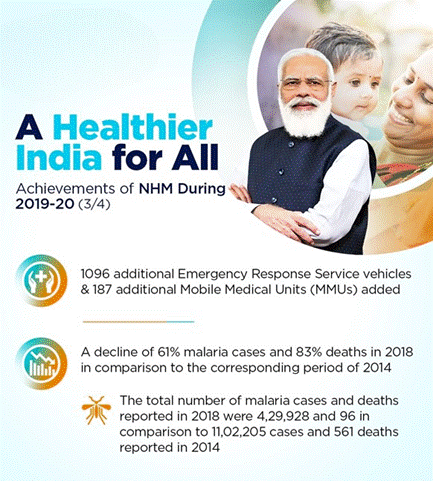
- Vulnerable Groups: People affected by communicable and non-communicable diseases, tribal populations, and those living in remote areas.
Eligibility Criteria:
- Universal Access: Open to all citizens, with particular emphasis on underserved areas and vulnerable groups such as women, children, and marginalized communities.
- Targeted Programs: Specific programs under NHM, like Janani Suraksha Yojana (JSY), are for low-income or economically weaker sections.
Benefits:
- Reduction in Maternal and Child Mortality: The mission has contributed to a significant decrease in maternal and child mortality rates through enhanced healthcare services, institutional deliveries, and immunization.
- Expanded Health Infrastructure: The establishment and upgrading of healthcare facilities, including PHCs, CHCs, district hospitals, and mobile medical units.
- Disease Control: The control of major communicable diseases like tuberculosis, malaria, and HIV/AIDS through targeted health programs.
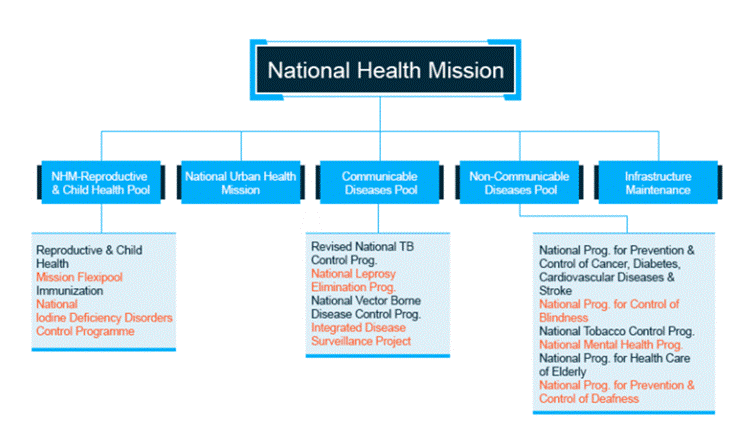
- Health Insurance: Programs like Rashtriya Swasthya Bima Yojana (RSBY) and Ayushman Bharat (PMJAY) provide health insurance to vulnerable groups, offering financial protection for healthcare.
- Free Healthcare Services: Providing free medicines and diagnostic services at public healthcare facilities.
- Community Empowerment: Through initiatives like Accredited Social Health Activists (ASHAs) and Village Health and Sanitation Committees (VHSCs), NHM encourages community participation in healthcare decision-making and monitoring.
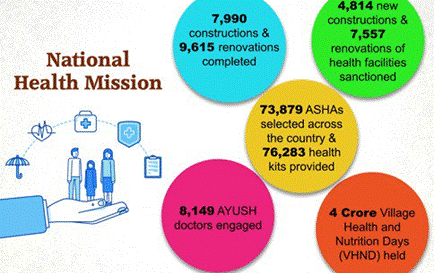
Additional Information:
- Monitoring and Evaluation: Robust systems are in place for tracking NHM's progress, ensuring that the interventions are effective and data-driven.
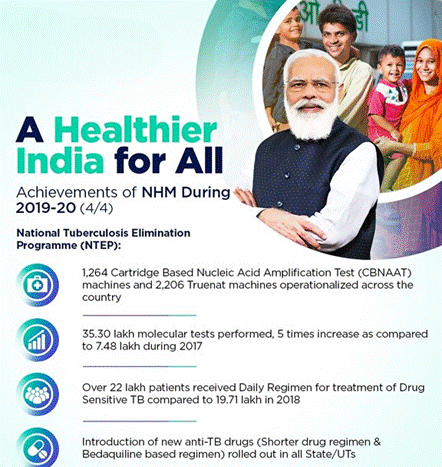
- Decentralized Implementation: NHM operates with a decentralized approach, where state health missions and district health missions are responsible for implementing and monitoring the initiatives.
- Public-Private Partnerships: NHM encourages collaborations with private entities to improve service delivery, infrastructure, and technological innovation in the healthcare sector.
Major Programs Under NHM:
- Janani Suraksha Yojana (JSY): Promotes institutional delivery among poor pregnant women.
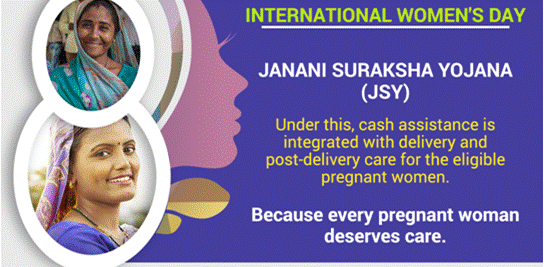
- National Mobile Medical Units: Provide healthcare services in remote and underserved areas.
- National Ambulance Service: Provides emergency medical services.
- Rashtriya Bal Swasthya Karyakram (RBSK): Focuses on child health and early identification of diseases.
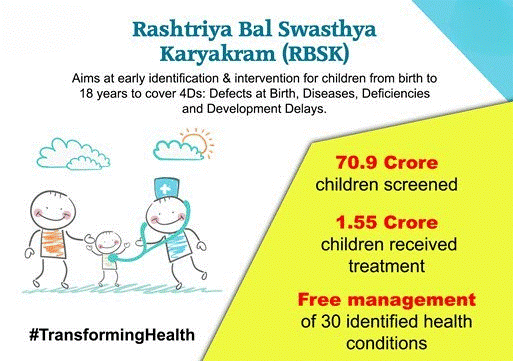
- National Ayush Mission: Promotes traditional medicine (Ayurveda, Yoga, Unani, Siddha, and Homeopathy).
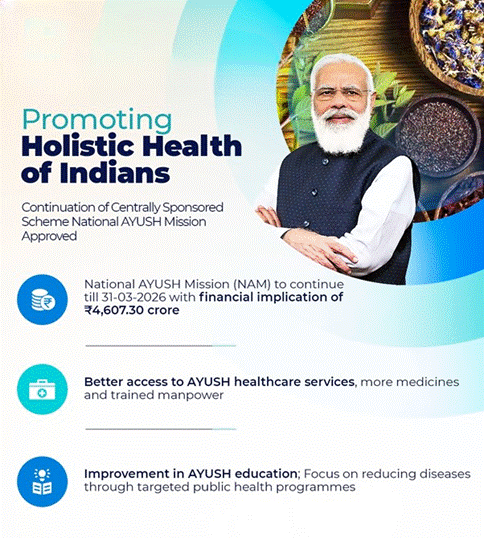
- Free Drugs and Diagnostic Services: Ensures essential medicines and diagnostics are available at public health facilities.
Ayushman Bharat Scheme
Launched:
- September 2018.
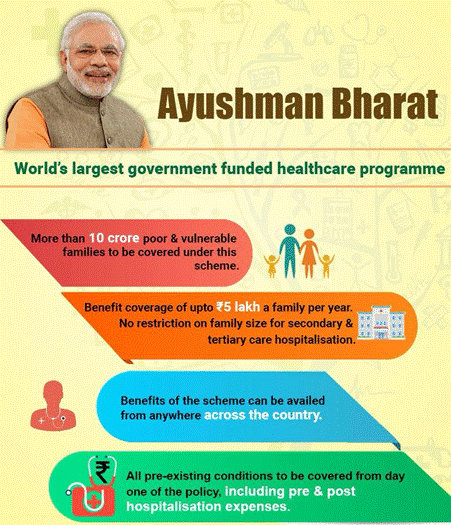
- Purpose:
- To provide universal health coverage, targeting secondary and tertiary health care for vulnerable populations in India.
- Components:
- Pradhan Mantri Jan Arogya Yojana (PM-JAY).
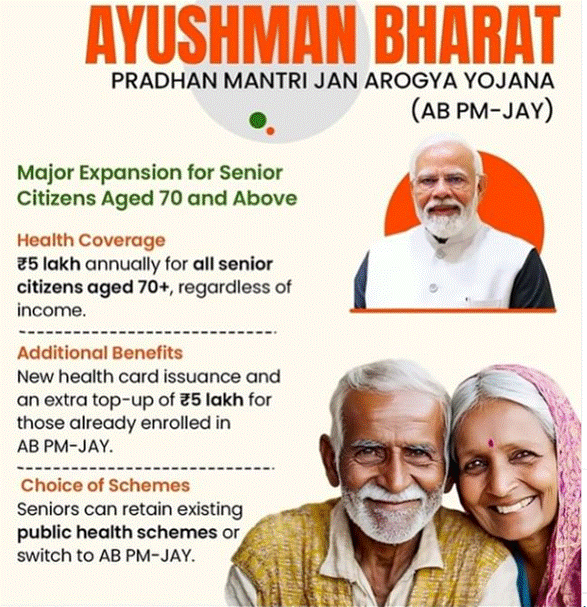
- Health and Wellness Centres (HWCs) (renamed as Ayushman Arogya Mandir in 2023).
Ministry or Nodal Agency:
- Ministry: Ministry of Health and Family Welfare, Government of India.
- Nodal Agency: National Health Authority (NHA), responsible for the implementation of PM-JAY.
Objectives:
- Achieve Universal Health Coverage (UHC).
- Provide financial protection against high medical expenses.
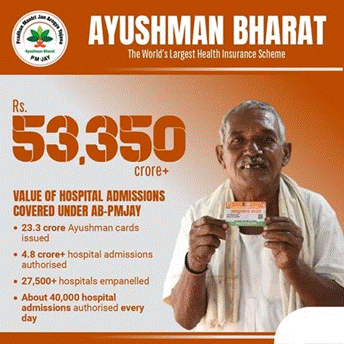
- Address healthcare needs at primary, secondary, and tertiary levels.
- Ensure access to healthcare for the poor and vulnerable sections of society, especially those not covered under existing schemes.
- Bridge gaps in healthcare infrastructure and coverage.
- Expand health insurance coverage to over 40% of India’s population.
Beneficiaries:
- Target Population: The scheme aims to cover approximately 12 crore families, benefiting around 55 crore individuals.
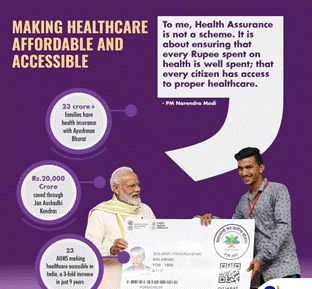
- Eligible Families: Identified through the Socio-Economic Caste Census (SECC) 2011.
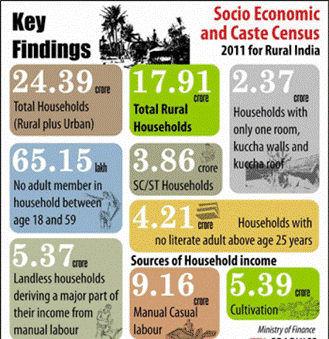
- The extension to senior citizens aged 70 years and above provides coverage to an additional 6 crore elderly from 4.5 crore families.
Eligibility Criteria:
PM-JAY:
- Rural Areas: Based on deprivation criteria (e.g., families without land, sanitation, etc.).
- Urban Areas: Based on occupational criteria (e.g., rag pickers, street vendors).
For Senior Citizens (70+):
- All senior citizens aged 70 and above, regardless of income, are now eligible for coverage under the expanded scheme.
- Those already enrolled under PM-JAY will receive additional top-up coverage.
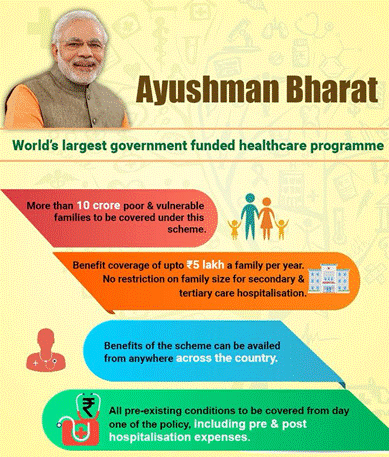
Benefits:
- Cashless Healthcare: Beneficiaries can avail of cashless hospitalization at empanelled public and private hospitals.
Coverage Amount:
- Rs. 5 lakh per family per year for secondary and tertiary care.
- Pre-hospitalization expenses (up to 3 days) and post-hospitalization expenses (up to 15 days) are covered.
- Pre-existing conditions are also covered.
Wide Coverage:
- Over 1,393 procedures are covered, including surgery, day care treatments, diagnostics, and medicines.
Additional Information:
- Key Achievements:
- Over 35.4 crore Ayushman cards issued.
- Over 30,529 hospitals empanelled (including 17,063 public and 13,466 private).
- 49% of Ayushman cards issued to women.
Expansion:
- The scheme has been extended to senior citizens aged 70 and above, providing Rs. 5 lakh coverage per family.
- Digital Health Mission (ABDM): Focuses on the digital infrastructure for healthcare, including the Ayushman Bharat Health Account (ABHA).
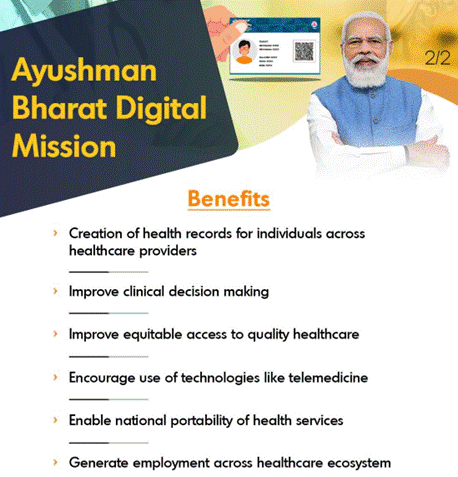
-------------------------------------
Leave a Reply
Your Comment is awaiting moderation.


